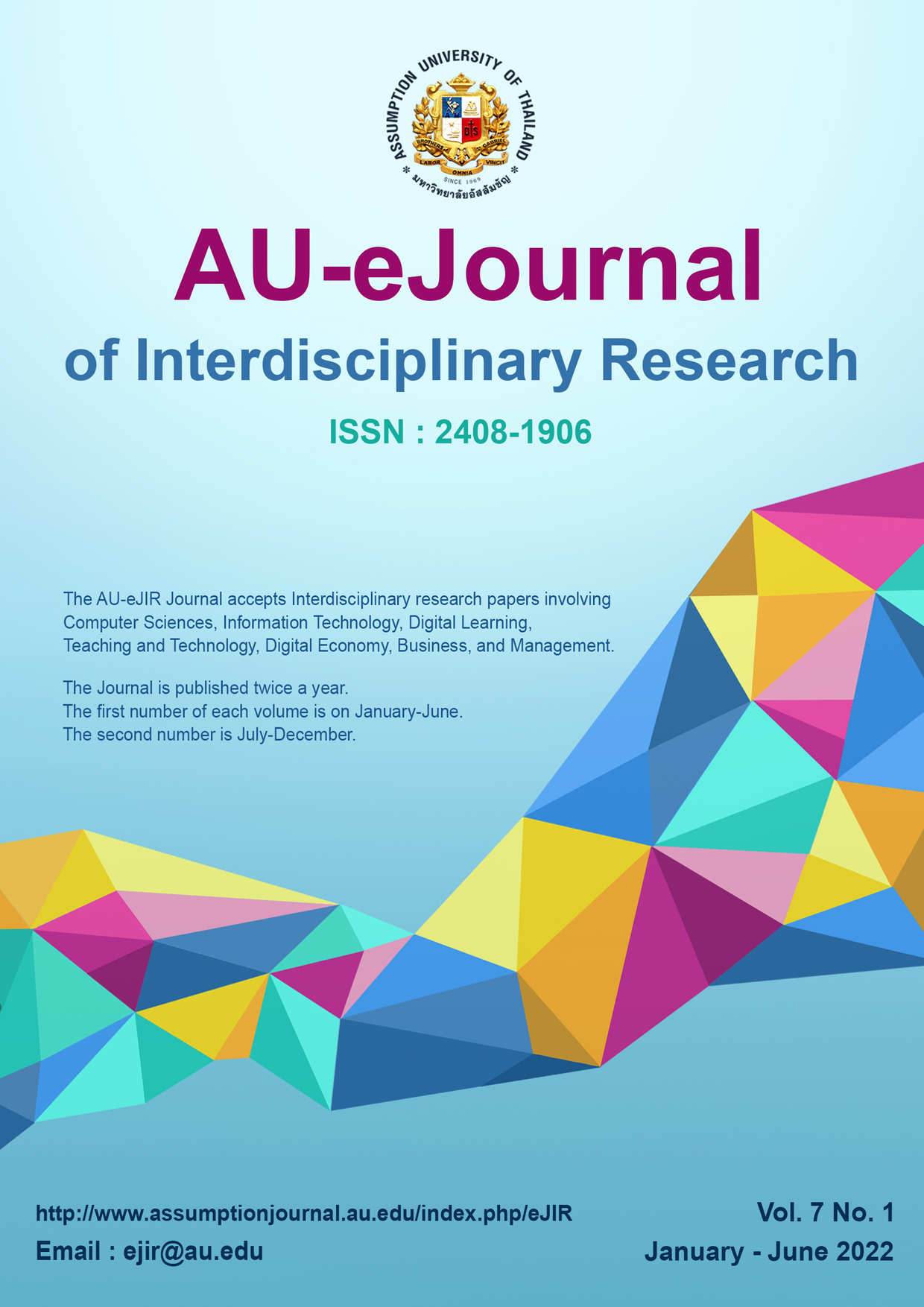MIDDLE-SCHOOL INTERNATIONAL STUDENTS’ PERCEIVED SATISFACTION TOWARD ONLINE EDUCATION
Keywords:
Perceived Satisfaction, Perceived Learning Outcomes, Online EducationAbstract
The objective of this study was to determine the factors that influence students’ perceived satisfaction and learning outcomes with online learning. The study applies critical success factors that were previously advanced on university online students to secondary online students. The independent variables of extrinsic motivation, teacher-student dialogue, student-student dialogue, student-self regulation, teacher activities, and course design are examined as potential influencers of students’ perceived satisfaction and perceived learning outcomes. A total of 80 secondary students with at least one year of online learning experience at an international high school in Bangkok, Thailand were used to determine the effectiveness of critical success factors. The findings indicated that student self-regulation and course design were statistically significant with perceived learning outcomes while extrinsic motivation, teacher-student dialogue, student-student dialogue, and teacher activities were not. Additionally, extrinsic motivation, teacher-student dialogue, student- student dialogue, student-self regulation, teacher activities, and course design separately showed no statistically significant relationship towards students’ perceived satisfaction and learning outcomes unless combined. Finally, the findings suggest that teacher-student dialogue and student self-regulation were the strongest influencers of students’ perceived satisfaction while course design and student self-regulation were the strongest influencers of perceived learning outcomes.





